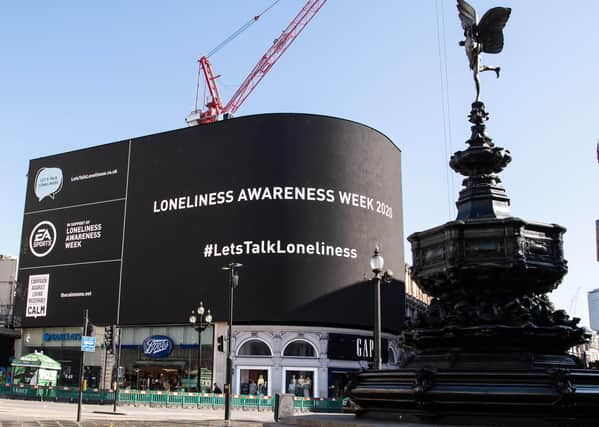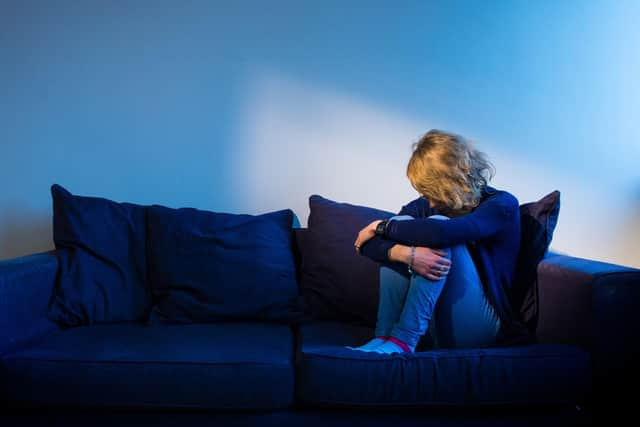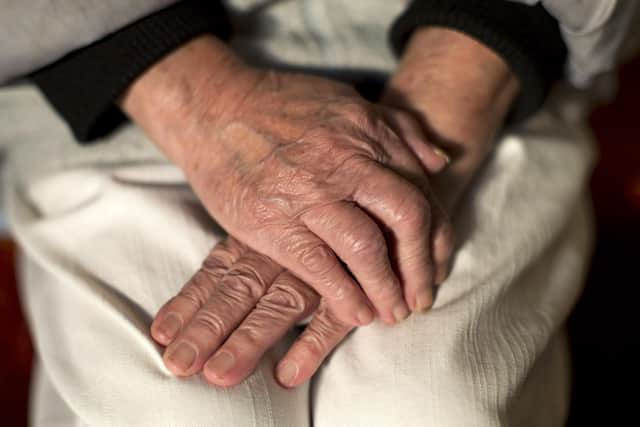How lockdown has impacted anxiety and mental health - Hugh Stickland


Doors closed around all of us as pubs, restaurants and shops shut and social contact became much more limited.
Everyone’s lives changed dramatically – but one of the groups that would have felt those changes the most are the more than 2.2 million people who were classified by the NHS as clinically extremely vulnerable to Covid-19.
Advertisement
Hide AdAdvertisement
Hide AdUntil now, we could only guess how they may have been behaving and coping – but now we have released new analysis that for the first time reveals how they have spent their time and how lockdown has impacted their mental health and personal wellbeing.


We worked quickly in collaboration with the Department of Health and Social Care (DHSC), the Department for Work and Pensions (DWP), the Ministry of Housing, Communities and Local Government (MHCLG), and Government Digital Services to run the survey.
This collaboration enabled us to ensure it met the needs of those using the gathered data to make decisions that impact the population – including the Chief Medical Officer and Ministers in MHCLG and DHSC.
We worked with colleagues from across Government to design the survey, test questions and advised on sampling and weighting methods to ensure results would be high-quality.


Advertisement
Hide AdAdvertisement
Hide AdThis project goes hand-in-hand with analysis on the social impacts of coronavirus, the latest of which has also been published showing how lockdown has affected anxiety levels across Britain.
From looking at both of these analyses, we know that mental health and wellbeing of certain groups of the population has been impacted.
More than a third of the shielding population reported worse mental health and well-being, with the effects differing by age and gender. Lockdown has impacted us all, but with the vast majority (95 per cent) of the shielding group reporting that they entirely or mostly followed shielding guidance, life has been even more constrained and may help to explain changes to mental health and wellbeing.
Across the wider population, anxiety levels peaked soon after lockdown began. We are still generally feeling much more anxious than before the pandemic, however, anxiety levels have improved a little since this initial peak. The equivalent of 19m adults in Britain report high anxiety, compared with 25m in the early days of lockdown.
Advertisement
Hide AdAdvertisement
Hide AdIt’s striking to note that increased anxiety has been particularly felt by those who are married, in civil partnerships and those aged over 75.
Of those who are married or in civil partnerships, 39 per cent report high anxiety, compared with 19 per cent before the pandemic. Before lockdown, those aged 60+ were least likely to report high anxiety. After lockdown, this changed dramatically.
We know that loneliness is a key factor in those with high anxiety and this could be a factor among some of the older age group, as well as a natural concern for their health.
People who are married or in civil partnerships are more likely to be home-schooling and this, combined with other pressures, perhaps being asked to work from home, or fit home-schooling round going out to work, could account for the unusual level of anxiety in this group. Normally, they are among the least likely to report high anxiety.
Advertisement
Hide AdAdvertisement
Hide AdMeanwhile, other ONS analyses show approximately 7.4 million people reported in our Opinions and Lifestyle Survey that loneliness had affected their wellbeing during the first full month of lockdown. A further study found increased loneliness and anxiety during lockdown had particularly impacted people with disabilities.
Almost three quarters (74 per cent) of disabled people told us that they were feeling very or somewhat worried about the effect coronavirus was having on their lives, and almost half (49 per cent) said they had been lonely in the previous seven days.
It’s clear that the coronavirus and the lockdown have impacted all of us, and many have heightened anxiety. Our recent analysis has helped to highlight particular groups of concern. The two publications add to this evidence base and importantly offer new insights on the 2.2 million asked to take additional precautions.
All this is important to understand so that policy-makers are able to make better decisions as the UK begins to recover from the pandemic and find a new normal. Hugh Stickland is Head of Strategy and Engagement at the Office of National Statistics.
Advertisement
Hide AdAdvertisement
Hide AdEditor’s note: first and foremost - and rarely have I written down these words with more sincerity - I hope this finds you well.
Almost certainly you are here because you value the quality and the integrity of the journalism produced by The Yorkshire Post’s journalists - almost all of which live alongside you in Yorkshire, spending the wages they earn with Yorkshire businesses - who last year took this title to the industry watchdog’s Most Trusted Newspaper in Britain accolade.
And that is why I must make an urgent request of you: as advertising revenue declines, your support becomes evermore crucial to the maintenance of the journalistic standards expected of The Yorkshire Post. If you can, safely, please buy a paper or take up a subscription. We want to continue to make you proud of Yorkshire’s National Newspaper but we are going to need your help.
Postal subscription copies can be ordered by calling 0330 4030066 or by emailing [email protected]. Vouchers, to be exchanged at retail sales outlets - our newsagents need you, too - can be subscribed to by contacting subscriptions on 0330 1235950 or by visiting www.localsubsplus.co.uk where you should select The Yorkshire Post from the list of titles available.
Advertisement
Hide AdAdvertisement
Hide AdIf you want to help right now, download our tablet app from the App / Play Stores. Every contribution you make helps to provide this county with the best regional journalism in the country.
Sincerely. Thank you.
James Mitchinson
Editor